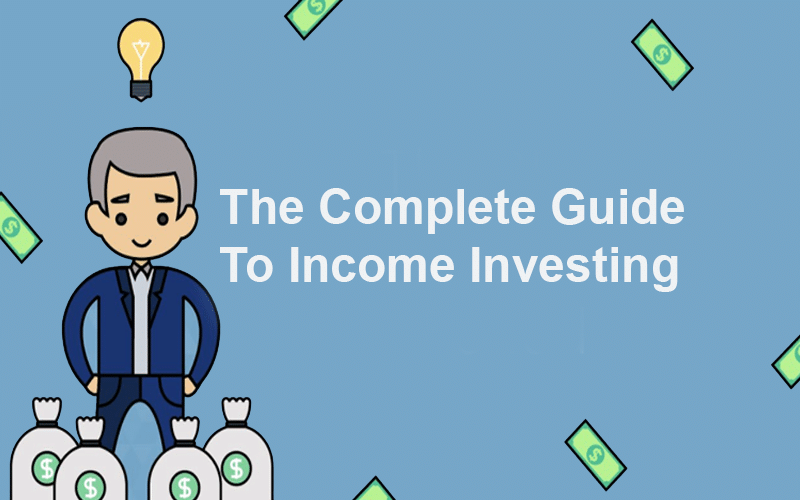Income investing is an investment strategy that involves buying assets that generate dependable and regular cash. The goal of income investing is to grow your funds over a long-period of time. As an investor, this can mean investing in various assets like stocks, bonds, annuities, and real estate, among others.
Difference between income, growth, and value investments
Income investing is different from other types of investing such as growth, value, and trading. Growth is the process of investing in fast-growing companies with little or no profits. The goal of growth investing is to bet that these companies will sustain their growth and get a significant market share in their industry. Examples of growth companies are Twilio, Zoom Video, and Snowflake.
Value investing, on the other hand, is the process of investing in undervalued companies hoping that their value will rise. Warren Buffett is one of the best-known value investors. In most cases, value investing involves buying companies with relatively stable revenue and free cash flows. Some of these firms are Unilever, Procter & Gamble (P&G), and Sysco.
Assets in income investing portfolios
A typical income investing portfolio involves several assets:
Stocks
Stocks refer to publicly traded companies. In the United States, there are more than 4,000 publicly traded companies. Income investors look for companies that pay regular dividends. Indeed, most of these firms tend to be highly indebted and have minimal or no revenue growth. Some of the most popular dividend stocks in the US are AT&T, Verizon, and Comcast, among others.
There are several things you need to look at when building an income stocks portfolio.
- Company you can understand – Ideally, you want a company that offers products or services you understand.
- Company with stable revenue and earnings – Look for a dividend company whose revenue is relatively stable. You don’t want to bet on a firm with falling revenue.
- Dividend yield – Yield is the annual dividend divided by the firm’s share price. Troubled companies tend to offer a bigger yield than safer ones. For example, a highly-indebted firm like AT&T has a yield of 7.34% while a company like Microsoft has a yield of just 0.9%.
- Dividend payout ratio – A payout ratio is the ratio of the firm’s dividend to its earnings. Companies in trouble tend to have a high payout ratio.
- Dividend growth – Ideally, you want a company with a record of increasing its dividend.
- Dividend kings – These are companies that have increased their dividend for the past 50 years and more. Examples are 3M, Genuine Auto Parts, and Johnson & Johnson.
- Dividend aristocrats – These are firms that have increased their payouts for the past 25 years. Examples are P&G, Sysco, Amcor, and Caterpillar, among others.
There are other terms you need to check out when creating an income portfolio. For example, it is often better to invest in firms that pay dividends and also buyback their stocks. By buying back shares, companies reduce the number of outstanding shares and increase the earnings per share.
Real Estate Investment Trust (REIT) is another term you need to know about. These are firms that build or buy real estate and are mandated by law to pay a dividend per year. Examples of these firms are Kimco Realty, Digital Realty, and Public Storage.
While you can buy dividend stocks individually, most experts prefer buying them in form of exchange-traded funds. For example, if you want to invest in dividend aristocrats, you can buy ProShares S&P 500 ® Dividend Aristocrats ETF or the SPDR S&P Euro Dividend Aristocrats ETF. Similarly, if you want to invest in technology firms that pay dividends, you can invest in the First Trust NASDAQ Technology Dividend Index Fund (TDIV).
Bonds
While stocks are the best-known financial assets, bonds are actually bigger. The market is worth more than $100 trillion while stocks are worth ~$90 trillion. For starters, bonds refer to loans issued by central governments, municipals, and companies. They then pay interest in fixed periods and then pay the principle at the end of the period.
A bond’s duration can range between 3 years to more than 30 years. Obviously, longer-dated bonds pay a higher yield than shorter ones because of the risks involved. There are several types of bonds:
- Corporate bonds – These are bonds issued by companies like Microsoft, Apple, and Amazon.
- Treasury bonds – These are bonds issued by central banks to fund the development of a government. The US government is the biggest issuer of treasury bonds.
- Municipal bonds – These are bonds issued by municipal governments to finance their operations.
- High-yield bonds – Also known as junk bonds, these are bonds issued by high-risky companies that have a low credit rating. Some of the best-known junk bonds are Occidental, Centene, and Bausch Healthcare. Because of their risks, these firms tend to have higher returns.
- Investment-grade bonds – These are bonds of highly stable companies like Microsoft and Apple. These bonds tend to have lower yields.
- Foreign bonds – These are bonds issued by foreign companies and governments.
Like in stocks, you can invest in bonds individually or through ETFs. For example, if you are interested in high-yield corporate bonds, you can invest in iShares iBoxx $ High Yield Corporate Bond ETF, SPDR Barclays High Yield Bond ETF, and iShares Broad USD High Yield Corporate Bond ETF. The three ETFs have a dividend yield of more than 5%.
Similarly, if you are interested in treasury bonds, you can invest in ETFs like iShares 1-3 Year Treasury Bond ETF and iShares Short Treasury Bond ETF, among others.
Other types of income investing assets
In addition to stocks and bonds, there are other popular types of income investing assets. They include:
- Real estate assets – These are buildings or other mortgage-backed securities that provide regular income to their investors.
- Annuities – An annuity is sort of an insurance policy that you purchase from an insurance company. The annuity guarantees you a certain amount of money for life.
- Peer-to-peer lending – These are relatively new assets where you lend money to other people through the internet.
Final thoughts
Income investing is a relatively simple strategy that is aimed at maximizing returns over a long period. It is also an excellent way to compound your funds. However, in the past, income investing has been beaten by growth investing as most investors started to focus on growth. Indeed, growth firms like Amazon, Zoom, and Slack have outperformed their value counterparts. Therefore, we recommend that you create a portfolio that combines both growth and value.



